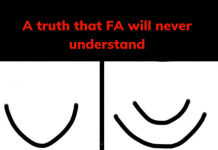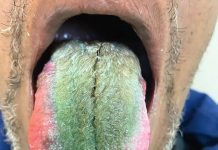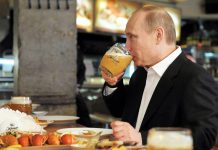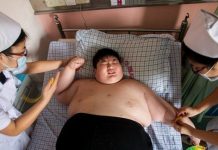Share on PinterestExperts say a number of factors have contributed to the spike in COVID-19 cases in rural areas of the United States.For starters, rural communities were not hit particularly hard by the first phases of the pandemic, but that has changed with the Delta variant.Experts add that religion, politics, and mistrust of government has also played a role.
In the final week of August, Kristi Brasher felt the sting of what it’s like to live in rural America during the Delta coronavirus variant surge.
“I lost five friends. Five! And all in the same hospital,” the northern Texas resident told Healthline.
She’s not alone.
As the Delta variant ravages rural areas across the nation, experts are both digging into the whys and looking for the hows to get past the surge.
Just how stark is the difference between most urban and most rural areas of the nation in how they react to the Delta variant?
Dr. Janis Orlowski, MACP, the chief healthcare officer of the Association of American Medical Colleges (AAMC), believes she’s seen the foundation of the reason firsthand.
Orlowski lives in Washington, D.C., but travels regularly to places like rural northern Wisconsin.
“In D.C., 100 percent of my neighbors wear a mask indoors. It’s just what we do,” she told Healthline.
In rural Wisconsin, where she was this past week, that was not the case.
“Other than my own, I have not seen a single mask,” she said. “Masks work. They do.”
What’s at play?
People on the front lines say it’s a perfect storm of personal freedom beliefs, mistrust of the government, a culture that tends toward taking care of things on their own, highly shared misinformation, and, yes, faith.
An early sense of security
Dr. Scott J. Anzalone lives and practices medicine in rural Logan, Ohio.
An “old school” local doctor, he said he’s often compared by patients to Doc, the small-town physician on the Netflix series “Virgin River.”
In the first three waves of the pandemic, he told Healthline, “We were spared. We had a very low rate (of infection). This one is blowing up.”
His patients, he said, may have developed a “false sense of security” by not feeling the impact of those first waves close to home.
Now that they are being hit hard, he’s working to try to sway their beliefs, something that can be frustrating.
“They’re not taking it seriously,” he said.
Dr. William Schaffner, an infectious disease specialist at Vanderbilt University in Tennessee, said he can see what’s led to the current outbreak in rural areas.
“In the beginning, this was much more of a big-city phenomenon,” he told Healthline. “It came from an exotic place. I mean, who ever heard of Wuhan before? And it hit hard first in the big cities, not as much in rural areas.”
“The Delta variant changed all that,” he said.
Religion plays a role
Faith, which tends to run strong and forge a bond in rural communities, is a factor in the current COVID-19 surge, some experts say.
Brasher has seen it firsthand.
“It comes down to this: People around here are not afraid to die and that’s because of their faith,” she said. “A woman told me she is not vaccinated and I asked her why. She said, ‘When it’s my time, it’s my time. I’m not afraid of it.’”
By “it,” Brasher said, the woman meant what many in her rural area mean: They’re not afraid to die because faith has taught them that “it’s a better place.”
Brasher said people in her community often quote it when talking about the pandemic:
“For to me, to live is Christ and to die is gain.” Philippians 1:21.
“To a T, every person I talk to around here who is unvaccinated says, ‘If I die, I die.’ It’s just not a scary thing to them. It is what it is,” Brasher said.
Schaffner believes faith — and some leaders in the faith industry — are part of the problem rural America has now.
He sees irony in people clinging to that belief about COVID-19.
“Why, then, will they go to seek immediate help if they break an arm or get appendicitis?” he asked. “So why not a vaccine?”
Schaffner lays some of the blame, as well as a chance for solution, on clergy in these areas.
“What’s missing is a real sense of the religious leaders actually leading on this,” he said.
Schaffner calls on them to step up and push their congregations to get vaccinated and mask up.
Personal freedom and politics
In fairness, Schaffner said, many people in rural areas develop a true sense of self-reliance, both from what they do, how far they are from cities, and pioneering history.
Unfortunately, he said, “that translates often to ‘let me make my own choice and don’t tell me what to do.’”
The political climate, Schaffner said, put that way of thinking on a pedestal.
“It was clear from the start that our national leader at the time was annoyed with COVID,” Schaffner said. “He didn’t want to deal with it and that has had an impact, leaving rural communities unprotected.”
Anzalone, who also serves on his community school board that did not mandate masks in school, has seen how politics have helped fuel the COVID-19 surge.
“The political climate here? People are still riding the fear factor,” he said. “They feel our government is so corrupt they cannot believe anything they tell them. So I say, ‘Don’t trust them. Trust us, your medical community.’”
That tide is not turning quickly enough, Anzalone said.
Orlowski said the AAMC is fighting that problem by going to where those people listen and trust. They’ve been on hundreds of local talk shows “trying to talk about vaccine hesitancy.”
Are they seeing progress?
“We have a way to go,” she said. “Unfortunately, someone getting very, very sick who you know and care about tends to turn the tide.”
Death close to home
While more than a half-million people died during the first three waves of the pandemic, that did little to sway beliefs in rural areas, or to drive up mask usage or vaccination rates.
Now, with people such as Brasher (who was vaccinated before the Delta surge) seeing suffering and death in their own circles, might things change?
“I cannot imagine there is anyone in a rural area who has not seen suffering — and possibly death — from this up close at this point,” Schaffner said.
And yet, critical care doctors in rural areas are not seeing a significant shift in attitude yet.
Dr. Michael R. Blumhardt is a critical care medicine specialist in Boise, Idaho, and is affiliated with Asante Rogue Regional Medical Center in Medford, Oregon.
He stepped out of the intensive care unit (ICU) to tell Healthline how it’s going.
“Our ICUs are operating beyond capacity,” he said. “We’re overflowing and we have a high mortality rate. It’s a sad, sad time.”
Blumhardt said he’s seen some patients — and families — develop new respect for the coronavirus and accept taking action after a family member spends time in an ICU or dies.
But not everyone.
“You drive around Medford on your way to work and it feels like a normal day,” he said. “It’s demoralizing to hear ‘it’s all a fake’ on the radio.”
Recently, his hospital had a person come in quite ill.
Just before being put on a ventilator, the patient declared that “it’s all fake.”
Once he survived and was able to come off the ventilator, Blumhardt said, “He still said it is all a fake. To which I thought, ‘Well, what got you here, then?’ Some people are just inflexible around this.”
But word of less testing and fewer positive tests have him hopeful.
“I think the reality of what is happening is beginning to take hold,” Blumhardt said.
Possible solutions
All the experts interviewed for this story have hope the country can get to a point of stopping COVID-19 outbreaks and in most cases avoiding death.
But it’s going to take action, they say.
In Kentucky, the governor has called in the National Guard to help struggling rural hospitals deal with the surge. That helps for now, but what others say they want are strong actions to help push people toward better pandemic choices.
“In this war on COVID, we’ve relied on the volunteers to fight,” said Schaffner, referring to those who are vaccinated.
“Now the war has changed and it’s time to draft. Mandates will drive vaccinations,” he said. “Governors need to step up. If they mandate vaccines for state employees, we will begin to see the change we need to see.”
“I don’t know what the answer is,” Anzalone said, “except that (government officials) need to stop playing politics.”
Blumhardt hopes for a solution for the sake of those who are ill and their families, and for the sake of those who work to save them.
“Daily, I’m seeing things I never thought I would,” he said. “Calling it emotionally difficult is an understatement.”
Source link : https://www.healthline.com/health-news/freedom-religion-mistrust-the-recipe-driving-the-covid-19-surge-in-rural-america











